Hop into the fascinating world of insects with our fun collection of cricket coloring pages. Insects, despite their small size, play a crucial role in the ecosystem, and crickets are no exception. These coloring pages provide a unique and engaging way to learn more about these chirping creatures while allowing you to express your creativity through color. Join us as we take a closer look at crickets and their intricate details through the art of coloring.

Feel free to select the design that appeals to you the most.
Once you’ve chosen, simply download the complimentary PDF template, print it, and indulge in the joy of coloring to your heart’s desire.
Alternatively, you can also employ these designs as embroidery patterns or draw inspiration from them for creating intricate fine line tattoos.
Cricket facts
If you’re new to my coloring pages, it’s worth noting that I enjoy providing you with the opportunity to delve into the subject matter, allowing you to effortlessly incorporate an educational aspect into your coloring experience.
So, let’s get started!
Here are lots of fun and interesting, simplified, facts about crickets:
- Musical Maestros: Male crickets are known for their distinctive chirping sounds, which they produce by rubbing their wings together. Each species of cricket has its unique chirping pattern, often used to attract mates or establish territory.
- Thermometer Insects: Crickets are sometimes called “thermometer insects” because their chirping rate is influenced by temperature. Warmer weather tends to make them chirp faster, while cooler temperatures slow them down.
- Good Luck Charm: In many cultures, crickets are considered symbols of good luck and prosperity. Some people even keep them as pets or cricket farms to attract good fortune.
- Ancient Musicians: Crickets have been appreciated for their musical talents for thousands of years. In ancient China, they were kept as pets and used in competitive cricket fighting events.
- Lifespan: The lifespan of a cricket varies depending on its species. On average, crickets live for about two to three months. However, some tropical species can live for up to two years.
- Exceptional Jumpers: Crickets are excellent jumpers and can leap up to 20 times their body length. This impressive ability helps them escape from predators and catch prey.
- Cricket Farming: Crickets are increasingly farmed for their high protein content. They are used in various food products like protein bars, snacks, and even as a sustainable source of protein for humans.
- Efficient Decomposers: In the wild, crickets play a vital role in breaking down decaying plant matter. Their scavenging helps with nutrient recycling in ecosystems.
- Sensory Antennae: Crickets have long, thin antennae that are highly sensitive to touch and chemical cues. These antennae help them navigate their environment, locate mates, and detect potential threats.
- Unique Ears: Crickets have tiny eardrums, or tympana, on their front legs. These structures allow them to hear the chirping of other crickets and respond accordingly.
- Varied Diet: Crickets are omnivorous and will eat a wide range of food, including plant matter, smaller insects, and even their own kind in some cases.
- Seasonal Behavior: Crickets are most active during the warmer months and are less commonly heard during the winter when they become less active.
- Camouflage Masters: Many species of crickets have evolved to blend seamlessly into their environments. They use their cryptic coloration to hide from predators.
- Night Owls: Most crickets are nocturnal, meaning they are active during the night. Their chirping is most commonly heard in the evening and at night.
- Complex Mating Rituals: Crickets engage in elaborate courtship rituals, which can involve the exchange of songs, pheromones, and specific body movements to attract a mate.
These fascinating facts shed light on the intriguing world of crickets, showcasing their unique behaviors, adaptations, and ecological importance.
We definitely learned a lot, but there is much more to know about crickets.
If you would like to continue reading, here are some other reputable resources to learn about crickets:
- https://en.wikipedia.org/wiki/Cricket_(insect)
- https://kids.britannica.com/kids/article/cricket/353014
- https://www.almanac.com/cricket-facts-and-keeping-pet-crickets
- https://a-z-animals.com/animals/cricket/
- https://www.noaa.gov/education/explainers/can-crickets-tell-temperature-answer-is-in-their-chirp
- To see all of my free printables, go here.
- If you would like to see my index of free printable coloring pages, go here!
- To see all of my animal coloring pages, go here.
- To see all of my insect-related coloring pages, go here.
Coloring tips
Coloring pictures of crickets can be a fun and creative activity.
Here are some of my best tips and tricks to help you get the most out of your cricket coloring experience:
- Reference Images: It can be helpful to have reference images of real crickets to guide your coloring. This will give you a better idea of their natural colors and patterns.
- Select a Color Palette: Decide on the color palette you want to use for your cricket. While crickets are typically brown or green, you can get creative with different shades and patterns.
- Start Light: Begin coloring with lighter colors as a base layer. This allows you to add darker shades and details later.
- Use Colored Pencils or Markers: Colored pencils and markers are great for adding detail and depth to your coloring. Experiment with different techniques to achieve the desired texture and shading.
- Blending: If you’re using colored pencils, consider using blending tools like blending stumps or even a cotton swab to blend colors together smoothly.
- Texture: Pay attention to the texture of the cricket’s body. Crickets often have fine lines and tiny dots on their exoskeleton. Adding these details can make your coloring more realistic.
- Contrasting Colors: To make your cricket stand out, use contrasting colors for its eyes, mouthparts, and antennae. This will draw attention to these features.
- Background: Think about the background of your coloring page. You can add a natural environment like grass or leaves to give context to your cricket artwork.
- Practice Patience: Take your time while coloring, especially when working on intricate details. Patience will result in a more polished final product.
- Experiment: Don’t be afraid to experiment with different colors and techniques. Coloring is a creative process, so have fun and see where your imagination takes you.
- Protect Your Work: If you’re using markers, be mindful of potential bleed-through. Place a sheet of paper underneath your coloring page to prevent marks from reaching the surface beneath.
- Stay Relaxed: Coloring can be a relaxing activity, so find a comfortable space, put on some calming music, and enjoy the process.
- Share Your Art: Once you’ve completed your cricket coloring sheet, consider sharing it with friends or on social media. It’s a great way to showcase your creativity and connect with others who enjoy coloring.
Remember that there are no strict rules when it comes to coloring, and the most important thing is to enjoy the process and express your creativity.
Options For Printing:
Letter C is for cricket writing practice worksheets
*My letter C is for cricket printable coloring sheets are intended for classroom use and are the only options on this page that can be freely used in a public setting without requiring written permission.
However, if someone inquires about their source, please share the link to this post.
Your cooperation is appreciated!
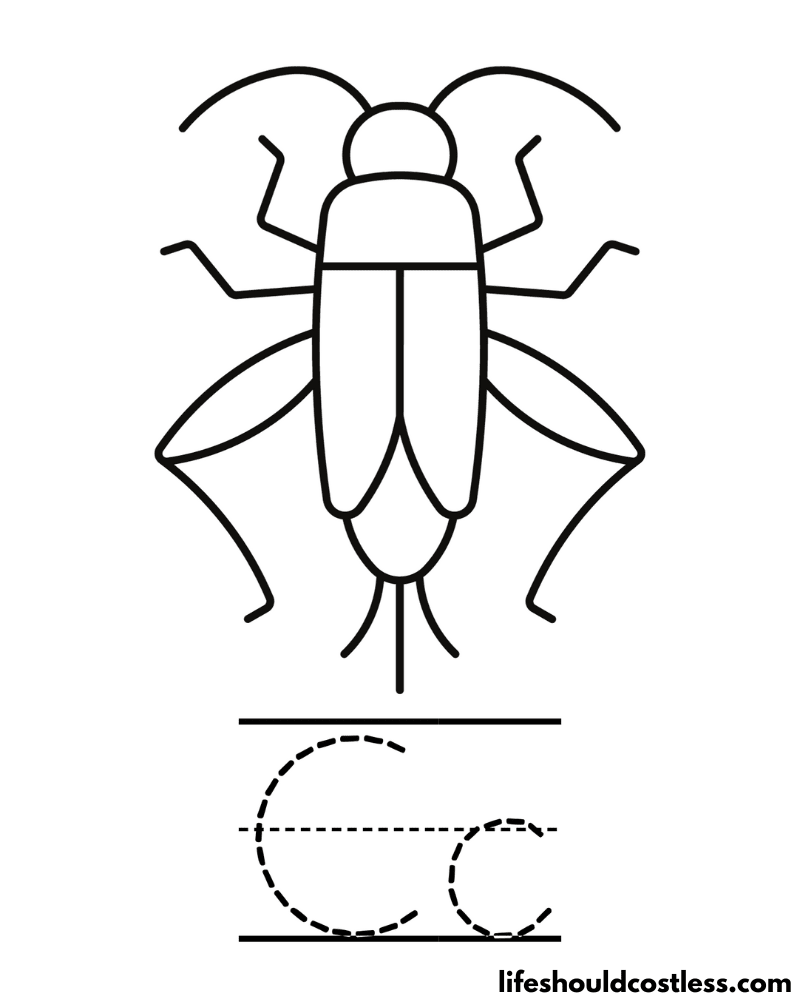
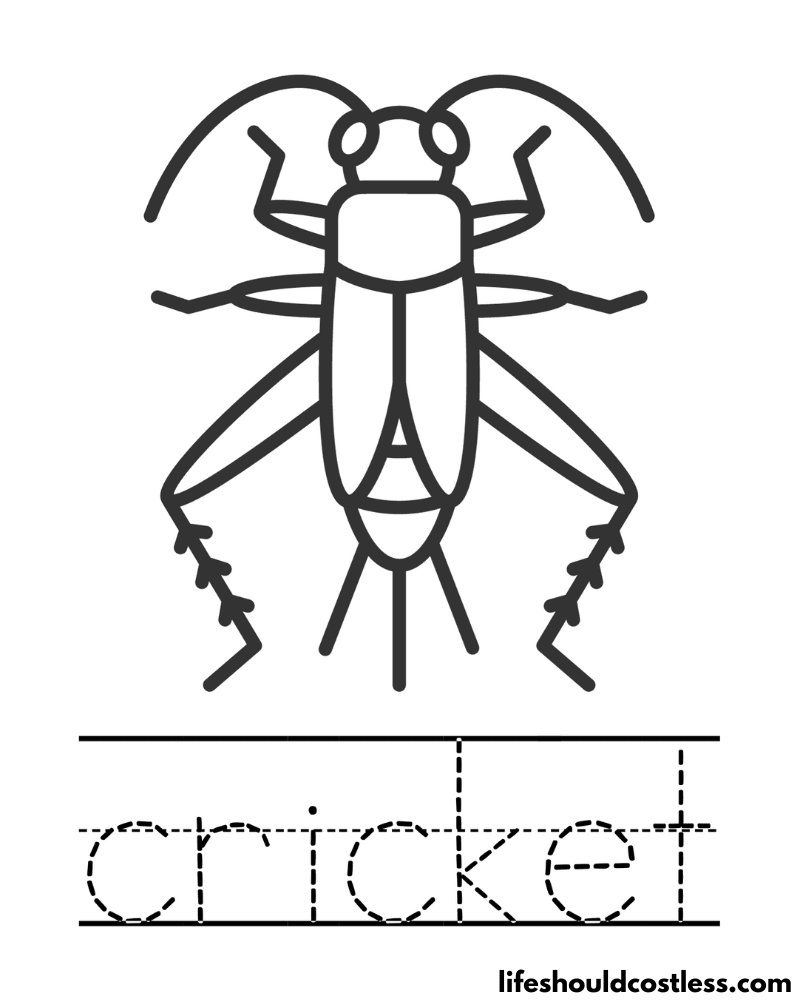
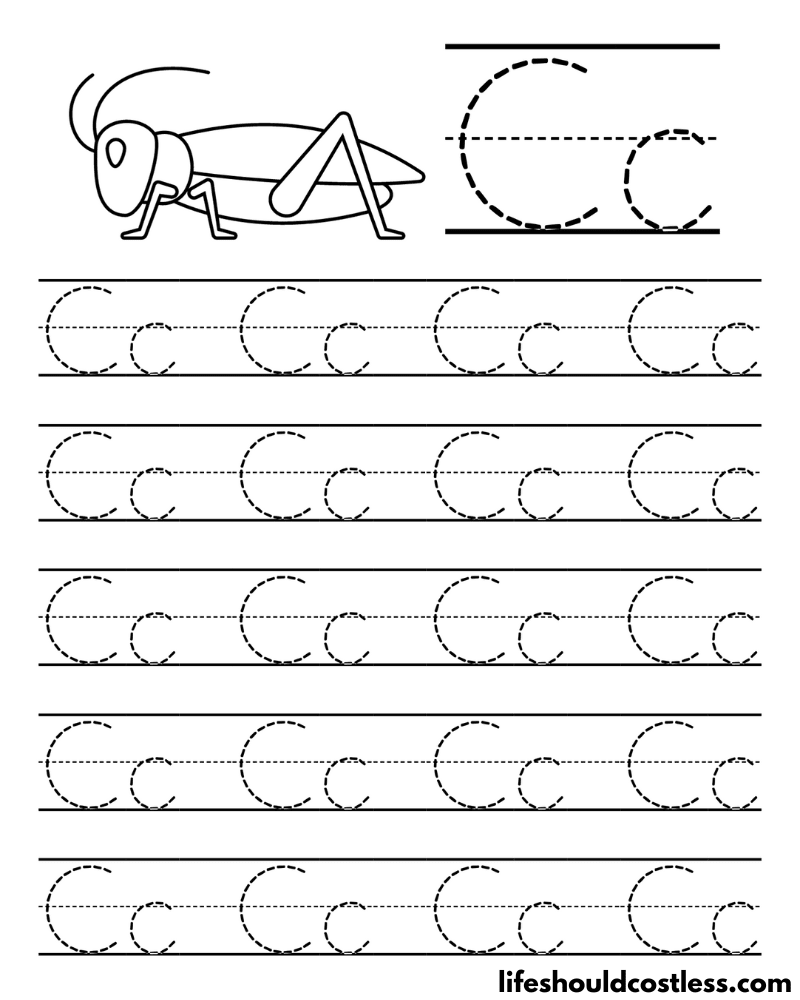
Various cricket designs
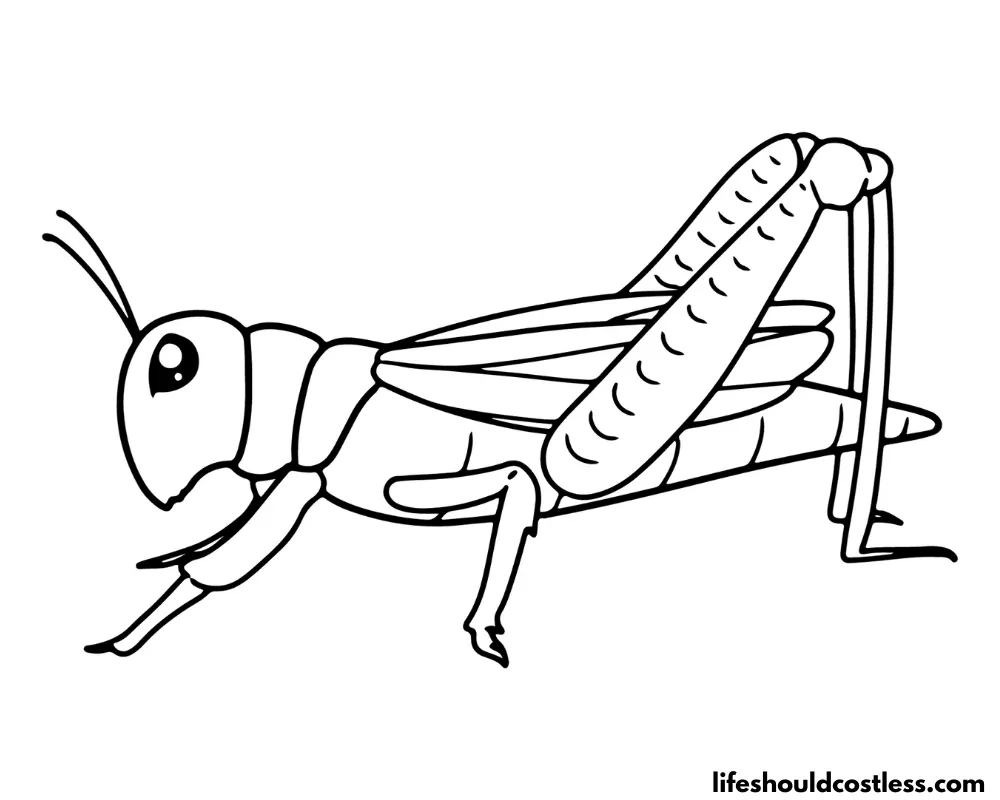
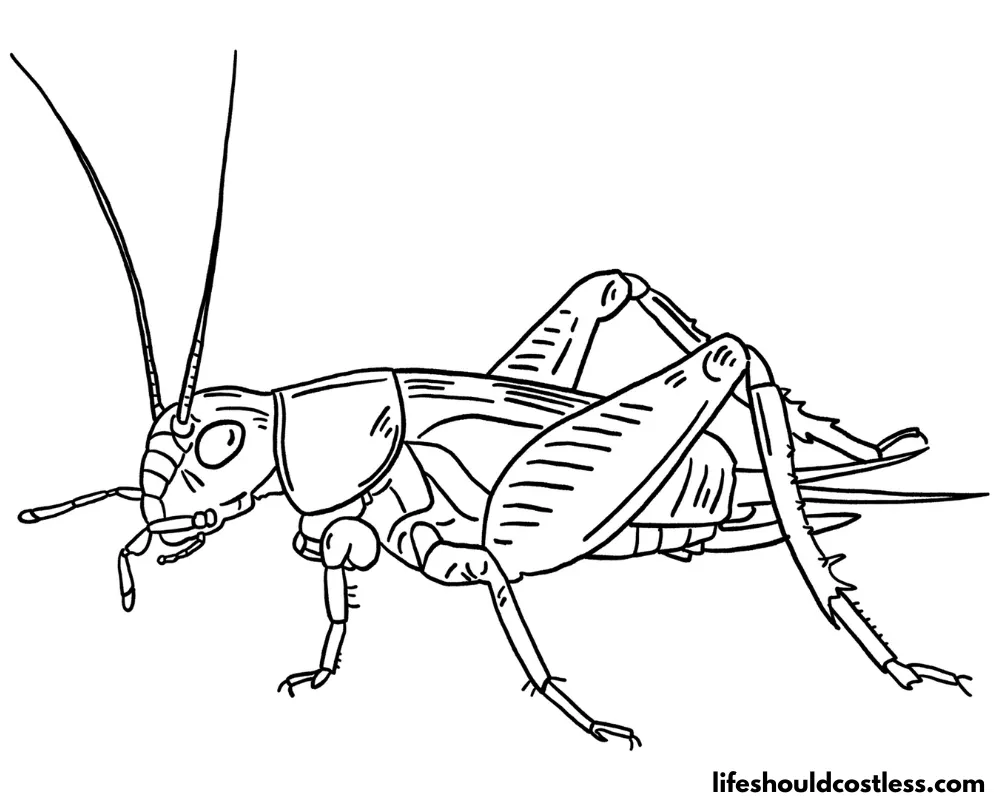
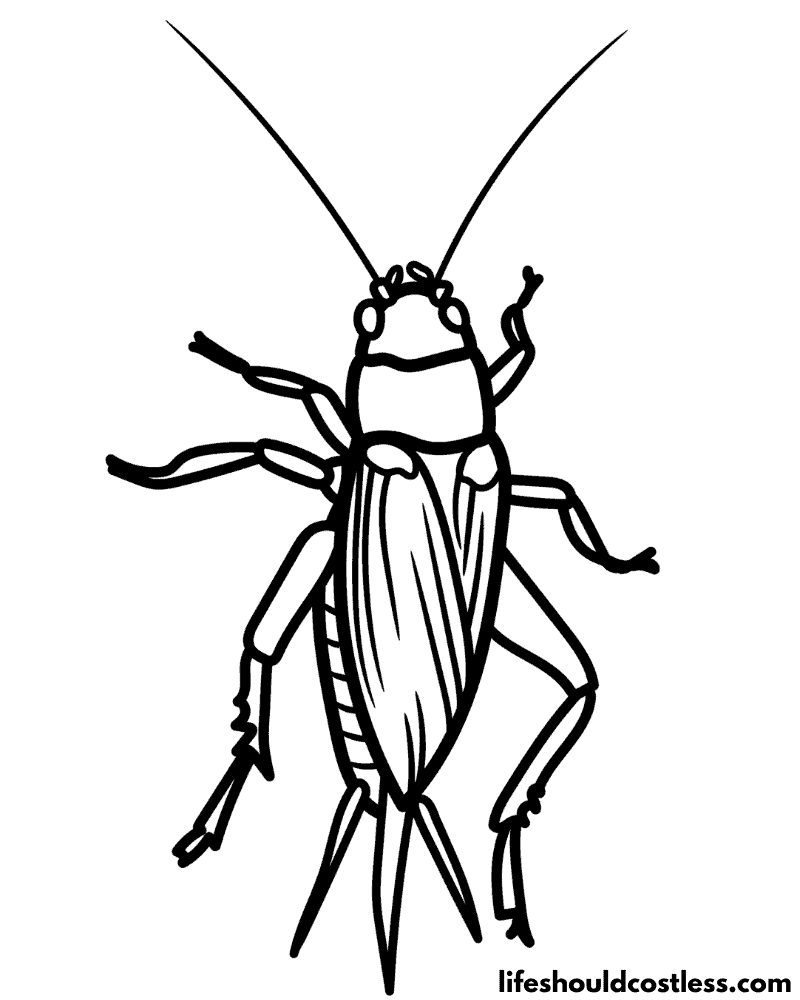
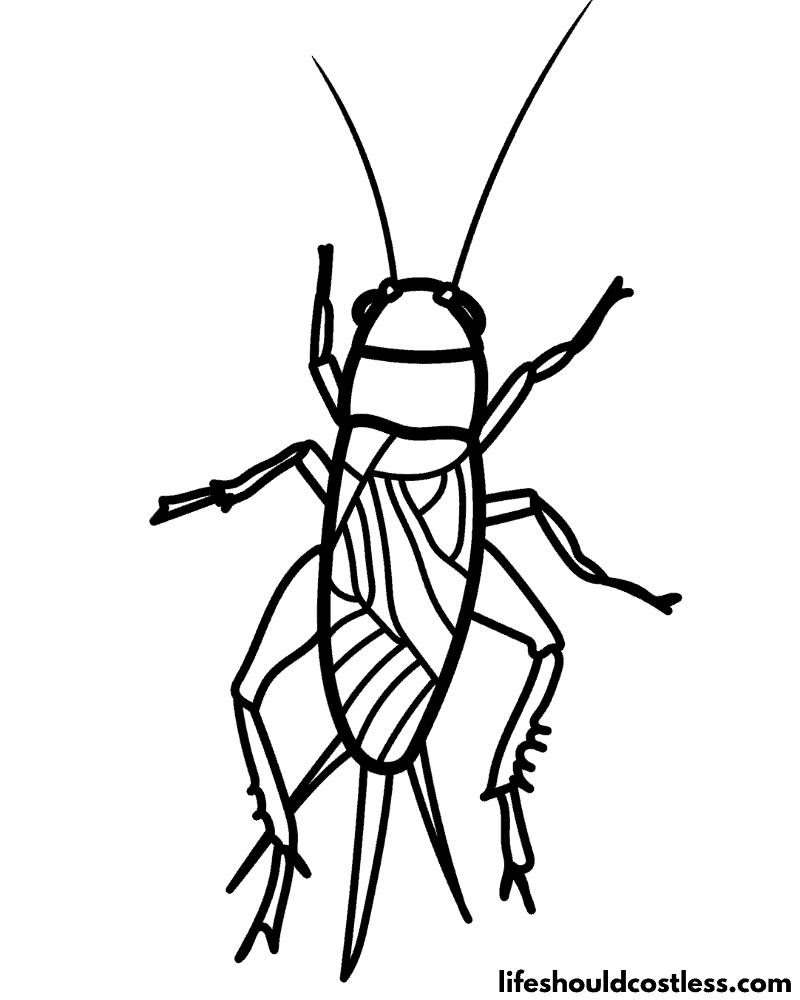
FAQ’s
Crickets can vary in color depending on their species and environment, but they are generally brown, green, or a combination of these colors.
Here are some common color variations:
Brown: Many crickets are brown or shades of brown. This coloration helps them blend into their natural surroundings, such as grass, leaves, and soil.
Green: Some species of crickets are green or have greenish hues, which is another form of camouflage, especially in grassy or leafy habitats.
Stripes and Patterns: Crickets may have stripes, spots, or patterns on their bodies. These patterns can serve as additional camouflage and vary in color from light to dark.
Bright Colors: While less common, some crickets have bright colors like red or yellow. These colors can serve as warning signals to potential predators.
Dark Variations: In certain environments, crickets may adapt to darker colors, such as black or dark brown, to blend into their surroundings.
It’s important to note that the specific coloration of a cricket can vary depending on its species, age, and environmental factors.
*I will add more cricket colour / color questions and answers as the questions get sent to me.
Conclusion
In conclusion, our journey through the world of cricket coloring pages has been a delightful exploration of both art and nature.
As we’ve picked up our coloring tools and ventured into the intricate patterns and textures of these fascinating insects, we’ve not only unleashed our creativity but also learned a bit more about the wonderful world of crickets.
From their unique chirping melodies to their role as decomposers in our ecosystems, crickets hold a special place in the natural tapestry of our planet.
Through these coloring pages, we’ve celebrated the beauty of crickets and discovered the joy of translating their natural wonders into vibrant hues on paper.
Whether you’re an aspiring artist, an insect enthusiast, or simply seeking a relaxing pastime, our cricket color pages offer a delightful and educational experience for all.
So, as you continue to indulge in the art of coloring these tiny creatures, remember to appreciate the charm of crickets in their natural habitats, and perhaps, you’ll find yourself listening a bit more closely to the nighttime symphonies they create.
Thank you for joining us on this coloring adventure, and may your cricket-themed creations continue to inspire curiosity and appreciation for the incredible world of insects.
Happy coloring!
Thanks so much for stopping by my blog and supporting my endeavors to make people’s lives a little easier/better/more affordable.
If you liked this post, or found it helpful in any way, please make sure to share it with your family, friends, and co-workers via social media….
Or you could even send them the direct link via email. Whichever way you choose to spread the love, I super appreciate it! ~Sarah
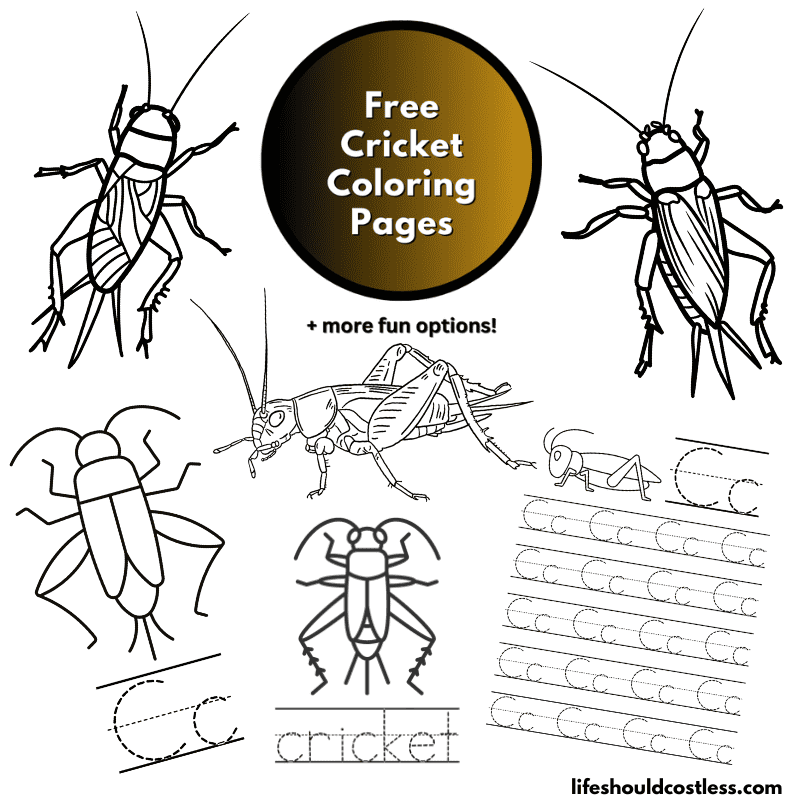
How To Follow & Support This Site
- If you would like to subscribe to my email list, go here.
- Make sure to follow along via social media, by going here.
- If you would like to learn how to really show your support to this site (at no cost to you), go here.
- If you would like to make a direct donation to the site, go here.
Check out my other free printables
- To see all of my free printables, go here.
- If you would like to see my index of free printable coloring pages, go here!
- To see all of my animal coloring pages, go here.
- To see all of my insect-related coloring pages, go here.
Otherwise, here are direct links to several of my other related posts that you’re also going to love:
Animals / Insects
Animals / Birds
Animals / Mammals
Other good resources for a printable cricket
- https://crayonjoy.com/animal-coloring-pages/insects/cricket/
- https://www.dreamstime.com/illustration/cricket-coloring.html
*This post was originally shared to this blog on 11/22/2023, and has since been updated to improve user experience, as well as to make it as shareable as possible across the social medias.
**Please note that I do try my hardest to provide factual, but easy to understand, information about each topic. If you notice a discrepancy in my coloring pages, facts, or see something that you deem “misinformation/incorrect” please make sure to notify me about it. I would prefer that you send me an email with a link to a more reputable resource on that subject, so that I can correct it as soon as possible. Thanks so much for helping this site become the best that it can be!
***Resources from djinkers were used in the production of this article.
***Resources from djinkers were used in the production of this article.
